Entertainment
This Actor’s Journey from a TV Ad to a ₹175 Crore Blockbuster Will Surprise You

They say every superstar has a humble beginning—but few make the leap quite like this. From the glossy yet anonymous world of television commercials to commanding a record-setting ₹175 crore film deal, this actor’s journey is nothing short of extraordinary.
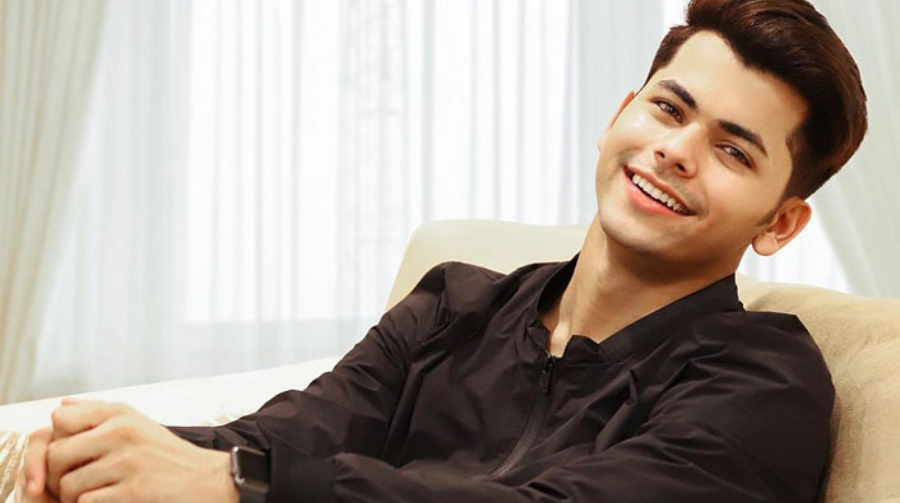
The Leap: From Ads to Mega-Stardom
From TV spots to major brand endorsements, Allu Arjun has always showcased immense screen presence. In a recent landmark move, the “Stylish Star” signed a historic ₹175 crore deal for Atlee’s upcoming mega-project, making him India’s highest-paid actor currently.
Early Career: Not Quite Camera-Ready—Yet
While Allu Arjun didn’t begin in TV ads per se, he did become a powerful force in advertising and pop culture. Endorsing brands like Coca-Cola, Frooti, Zomato, KFC, and Astral Pipes, his transformation from film actor to pan-India brand icon speaks volumes of his charisma and appeal
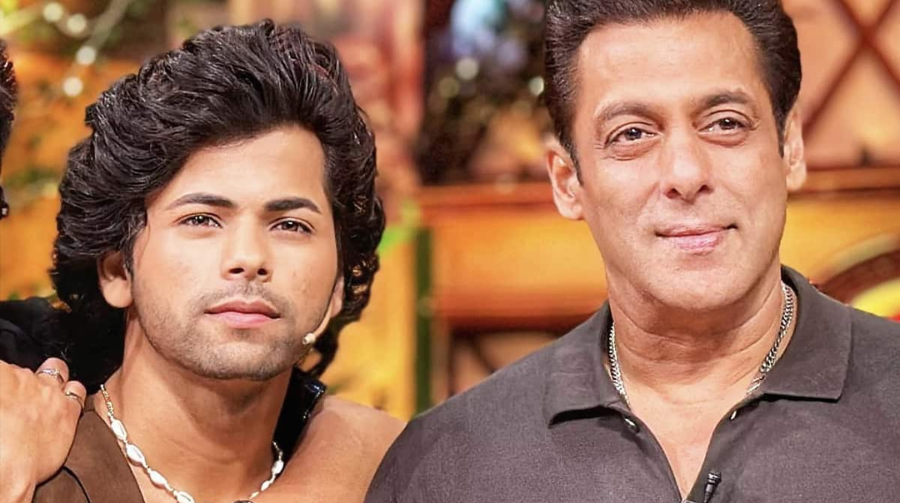
Breakthrough on Film: The Pushpa Phenomenon
- Debut and Struggle: He made his acting debut as a child in Vijetha (1985) and later as a lead in Gangotri (2003). Despite the film, he found himself jobless—until director Sukumar cast him in Arya, a turning point that cemented his rise in Telugu cinema
- Rise to Stardom: Known for dynamic dance performances and powerful screen presence, Allu Arjun’s career soared with hits like Race Gurram (his first ₹100 cr grosser), Ala Vaikunthapurramuloo, and others
- Pan-Indian Icon: His portrayal in Pushpa: The Rise (2021) earned him a National Award and catapulted him to superstar status. The sequel Pushpa 2: The Rule went on to become one of India’s highest-grossing films—exceeding ₹1,800 crore globally.

From Screen Charisma to Unmatched Brand Power
Post-Pushpa, Allu Arjun transformed into a brand goldmine. His endorsement fees surged—reportedly earning ₹6–7 crore per day for national campaigns. Notable brands like Coca-Cola, Astral, KFC, Zomato, and more tapped into his widespread appeal.
What the ₹175 Crore Deal Represents
Signing for Atlee’s highly ambitious and VFX-heavy project (tentatively titled A6), Allu Arjun not only secured a massive ₹175 crore fee but also a 15% share of the film’s profits—breaking new ground in Indian cinema’s remuneration models

Reddit Speaks: Fan Glory and Recognition
His dubbed films on setmax gave him… popularity in the north Indian states… pushpa did 100 cr in Hindi belt even without any promotion
Allu Arjun is also the first South Indian actor to earn a wax statue at Madame Tussauds (Dubai), highlighting his pan-Indian and global resonance
Conclusion & Context
From early setbacks post-debut, to becoming an unbeatable brand ambassador, to inking a ₹175 crore blockbuster deal—Allu Arjun’s journey is a modern cinema success story. It underscores how raw talent, strategic roles, and electrifying screen presence can propel an actor from relative obscurity to national icon status.
Entertainment
🎤 Enrique Iglesias India Tour 2025: Mumbai Concert Date, Venue, Ticket Prices & What to Expect

Get ready, Mumbai — the wait is finally over! After 13 long years, global pop sensation Enrique Iglesias returns to India for a high-octane live concert at the MMRDA Grounds, Bandra Kurla Complex (BKC), on Wednesday, October 29, 2025.
The multi-Grammy Award-winning artist, best known for timeless hits like Hero, Bailamos, and Escape, is set to kick off his India Tour 2025 with a grand opening in Mumbai before heading to other Asian destinations.
The concert promises unmatched nostalgia, Latin rhythm, and chart-topping pop anthems that defined an era of music for millions of fans.
📅 Enrique Iglesias Mumbai Concert 2025 – Key Details
| Category | Details |
|---|---|
| Date | Wednesday, October 29, 2025 |
| Venue | MMRDA Grounds, Bandra Kurla Complex (BKC), Mumbai |
| Gates Open | 4:00 PM IST |
| Opening Acts | Jonita Gandhi, Progressive Brothers |
| Main Performance | Enrique Iglesias (starting around 8:00 PM) |
| Expected Show Duration | Approx. 2.5 hours |
| Organizer | BookMyShow Live & Live Nation India |
| Tickets | ₹7,000 (General), ₹14,000 (VIP), limited platinum packages available |

🎶 What to Expect from Enrique’s 2025 India Tour Performance
Fans can look forward to an electrifying mix of romantic ballads, Latin-pop classics, and club hits — blending nostalgia with the artist’s signature charisma.
Based on Enrique’s recent setlists from his European and Latin American tours, these songs are likely to feature:
- Bailamos
- Hero
- Escape
- Be With You
- Rhythm Divine
- Tonight (I’m Lovin’ You)
- I Like It
- Takin’ Back My Love
- Subeme La Radio
- Move to Miami
The concert’s stage design, LED backdrops, pyrotechnics, and live band arrangements are expected to mirror the Enrique Iglesias World Tour 2024, ensuring an international concert experience for Indian audiences.
💃 Special Opening Acts: Indian Artists Add Local Flavor
Before Enrique takes the stage, fans will be treated to opening acts from Indian stars:
- 🎤 Jonita Gandhi, the Indo-Canadian playback singer known for her powerhouse vocals and Bollywood hits (The Breakup Song, Arabic Kuthu).
- 🎧 Progressive Brothers, one of India’s most popular DJ duos, known for blending EDM with Bollywood remixes.
Their performances are expected to kick off around 6:30 PM, setting the mood for the evening.
🌟 Why This Show Is Extra Special
This concert marks Enrique Iglesias’s return to India after 13 years, since his last performance in Pune (2012) — a show that drew thousands of fans and became one of India’s most memorable international pop events.
For many fans, this 2025 concert represents:
- A once-in-a-generation experience of seeing one of pop’s biggest icons live again.
- A nostalgic journey through early-2000s pop culture and love ballads.
- A symbol of India’s growing place on the global music tour map, alongside acts like Coldplay, Ed Sheeran, and Post Malone.
🕺 Fan Buzz: Mumbai Gears Up for the Big Night
Excitement has taken over social media, with fans using hashtags like #EnriqueInMumbai, #EnriqueIndiaTour, and #HeroReturns to share their anticipation.
Queues outside the venue began forming early in the morning, and ticket resale platforms report near sellouts.
Celebrities and influencers including Farhan Akhtar, Malaika Arora, and Shahid Kapoor are also expected to attend the event, making it one of the biggest music nights of 2025 in India.
🧭 Tips for Fans Attending the Concert
To make the most of your evening, here are a few pro tips:
- Arrive Early: Reach the venue by 4 PM to avoid long entry queues.
- Carry Essentials: Valid ID, digital ticket, portable charger, and a water bottle (if allowed).
- Follow Security Guidelines: No large bags, outside food, or professional cameras.
- Transport: Use ride-hailing apps or Bandra Kurla Complex shuttle services; parking is limited.
- Stay Hydrated & Comfortable: Mumbai’s humidity can be high, so plan accordingly.
🌍 Enrique Iglesias – India Tour 2025 Schedule (Tentative)
After the Mumbai show, sources indicate possible additional performances in:
- New Delhi – Indira Gandhi Indoor Stadium (TBD)
- Bengaluru – E-Zone Grounds (TBD)
However, official confirmation from Live Nation India is awaited.
🎤 About Enrique Iglesias
Often hailed as the “King of Latin Pop,” Enrique Iglesias has sold over 180 million records worldwide, won Grammy and Latin Grammy Awards, and scored more than 80 number-one hits across Billboard charts.
Known for his passionate performances and magnetic stage presence, Enrique’s influence extends beyond music — his collaborations with artists like Pitbull, Jennifer Lopez, and Bad Bunny have shaped modern Latin-pop and dance music.
📅 Summary: Key Facts at a Glance
| Feature | Details |
|---|---|
| Performer | Enrique Iglesias |
| Tour Name | India Tour 2025 |
| City | Mumbai |
| Venue | MMRDA Grounds, Bandra Kurla Complex |
| Date | October 29, 2025 |
| Opening Acts | Jonita Gandhi, Progressive Brothers |
| Expected Setlist | Hero, Escape, Bailamos, Tonight (I’m Lovin’ You) |
| Ticket Prices | ₹7,000 – ₹14,000 |
| Organizer | Live Nation India |
| Last India Visit | 2012 (Pune Concert) |
Entertainment
Netflix Unveils First Look Motion Poster of Mythological Epic Kurukshetra | Release Date Revealed
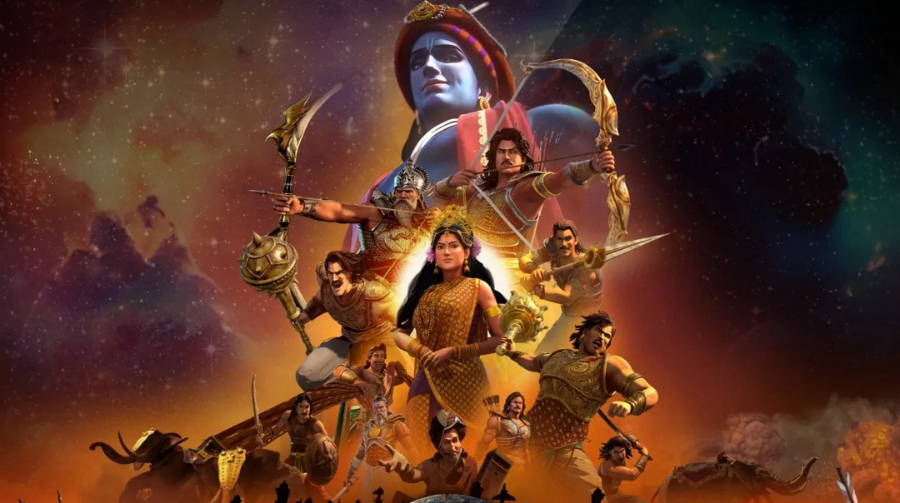
Streaming giant Netflix has announced its upcoming animated mythological series Kurukshetra, inspired by the timeless Indian epic Mahabharata. The platform revealed the first look motion poster of the series on social media, sparking excitement among fans.
A Fresh Take on Mahabharata
Unlike traditional retellings, Kurukshetra offers a unique narrative lens. The story unfolds through the perspectives of 18 key warriors, exploring not only their battlefield heroics but also their inner conflicts, personal rivalries, and moral dilemmas.
The epic war of Kurukshetra — a clash between dharma (righteousness) and adharma (unrighteousness) — will be reimagined for modern audiences, blending mythology with powerful visual storytelling.

Release Date and Production Details
- Release Date: October 10, 2025
- Format: Animated Mythological Series
- Creator: Anu Sikka
- Producers: Alok Jain, Anu Sikka, Ajit Andhare (Tipping Point Production)
- Writer & Director: Ujjan Ganguly
- Lyricist: Gulzar
The involvement of veteran poet Gulzar in penning the series’ lyrical elements adds a touch of poetic grandeur to the narrative.
Netflix Announcement
Netflix India shared the first look motion poster with the caption:
“Shankhnaad ke sath arambh hoga dharm aur adharm ka mahayudh. Watch Kurukshetra, out 10 October, only on Netflix.”
Fans quickly filled the comments section with enthusiasm. Reactions ranged from “Omgggg Finallyyyyy” to “Waiting,” highlighting the strong anticipation for this epic adaptation.
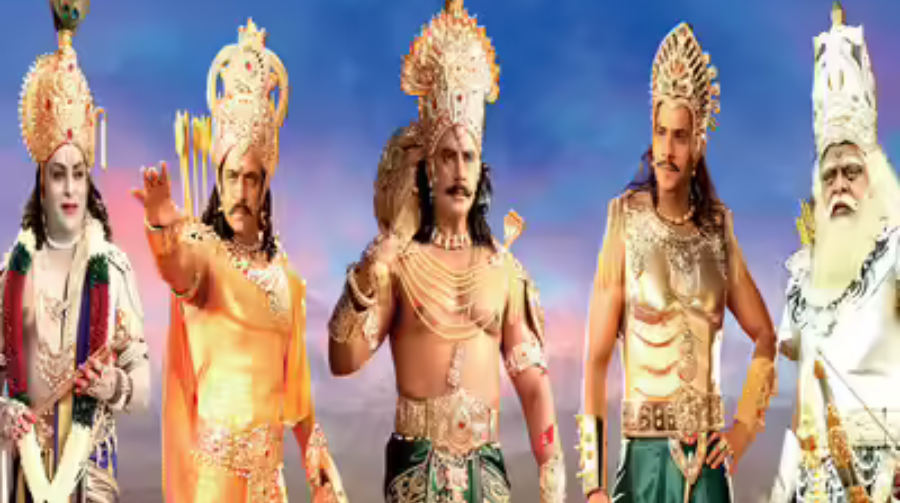
Creator’s Vision
Speaking about the project, Anu Sikka, the creator, said:
The creators emphasized that the show aims to make this layered and complex epic accessible to both Indian and global audiences in a visually stunning, rich new format.
Why Kurukshetra Matters
- Global Appeal: Mahabharata’s universal themes of duty, morality, and destiny resonate beyond India.
- Fresh Format: An animated retelling makes the story engaging for younger audiences while retaining depth for adults.
- Creative Team: With Gulzar’s lyrical artistry and Netflix’s production scale, the series promises both grandeur and authenticity.
Entertainment
Zakir Khan Becomes First Indian to Perform in Hindi at New York’s Madison Square Garden, Receives Standing Ovation
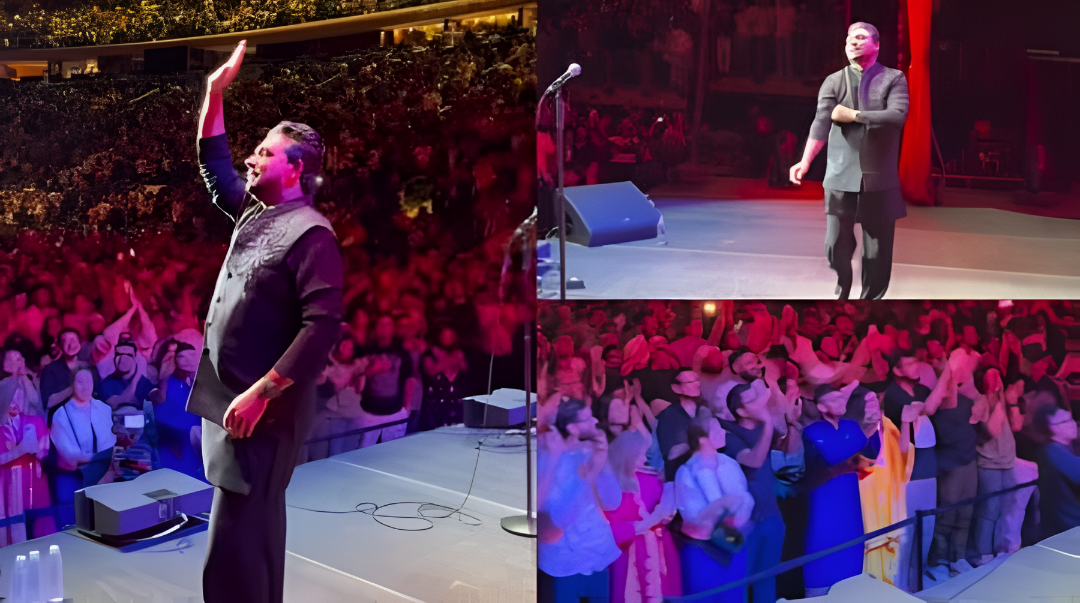
In a proud moment for Indian comedy, Zakir Khan has etched his name in history by becoming the first Indian stand-up comedian to perform entirely in Hindi at the legendary Madison Square Garden (MSG) in New York. Known for his heartwarming storytelling and signature “sakht launda” persona, Zakir performed to a sold-out crowd of 6,000 people, proving that humor has no language barriers.
Zakir’s Historic Performance
At just 37, Zakir Khan has reached a career-defining milestone that many international comedians aspire to. His performance at MSG was part of his ongoing North America Tour, which has already witnessed packed venues across Canada and the US. For fans in New York, the show was extra special—not just for the humor but also for the pride of seeing Hindi comedy dominate one of the world’s most iconic stages.
During the nearly two-hour performance, Zakir kept audiences engaged with his signature mix of personal anecdotes, sharp wit, poetry, and emotional storytelling. The audience erupted in laughter throughout and rose to their feet with a thunderous standing ovation, marking a historic night not just for Zakir, but for Indian stand-up as a whole.
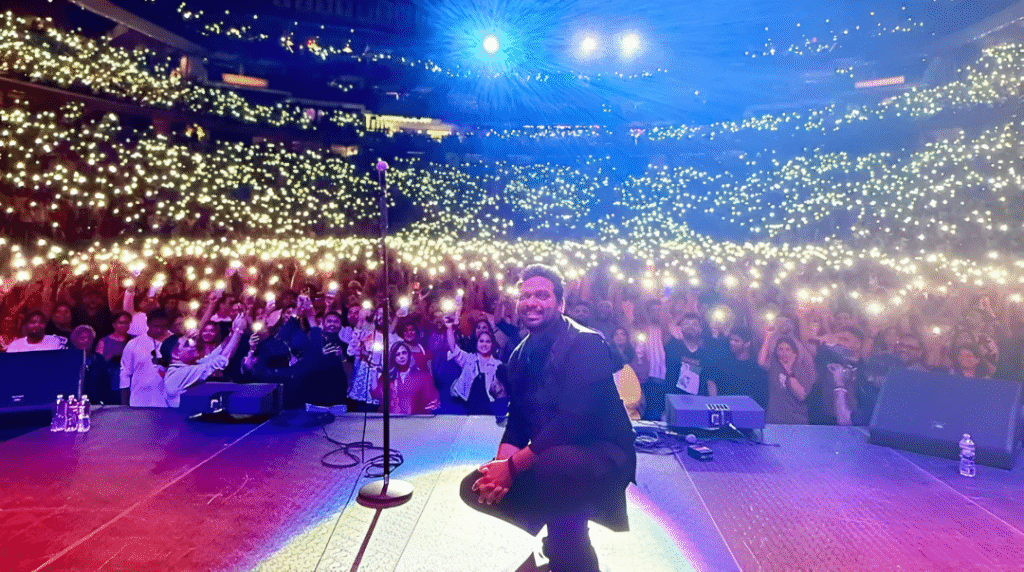
Celebration on Social Media
Soon after the performance, Zakir’s brother Zeeshan Malang shared an emotional video clip from the venue, capturing the standing ovation moment. He praised Zakir’s journey and captioned the clip with pride: “A standing ovation from @thegarden to Times Square New York takeover — bhai is unstoppable.”
The video quickly went viral on Instagram and X (formerly Twitter), drawing applause from fans and fellow comedians alike. Vir Das, who himself has performed at major international venues, congratulated Zakir saying, “congratulations brother!” Meanwhile, Munawar Faruqui expressed his excitement by commenting, “Goosebumps… what a legacy zindabad.” Comedian Samay Raina summed it up in one word: “Historic.”
Hasan Minhaj Calls It a Global Milestone
Adding to the significance of the evening, Indian-origin American comedian Hasan Minhaj joined Zakir Khan on stage. Minhaj described the performance as “a historic night for comedy around the world.” In an Instagram post, he wrote:
“Last night I got to see my brother Zakir Bhai become the first comedian in history to headline @thegarden entirely in Hindi. He combines storytelling and poetry in ways that are elevating the genre of comedy to places I’ve never seen before. I also think my parents love him more than me (I’m okay with that).”
Minhaj’s words reflect how Zakir’s storytelling style—rooted in Indian cultural nuances yet universally relatable themes—has resonated far beyond language and geography.
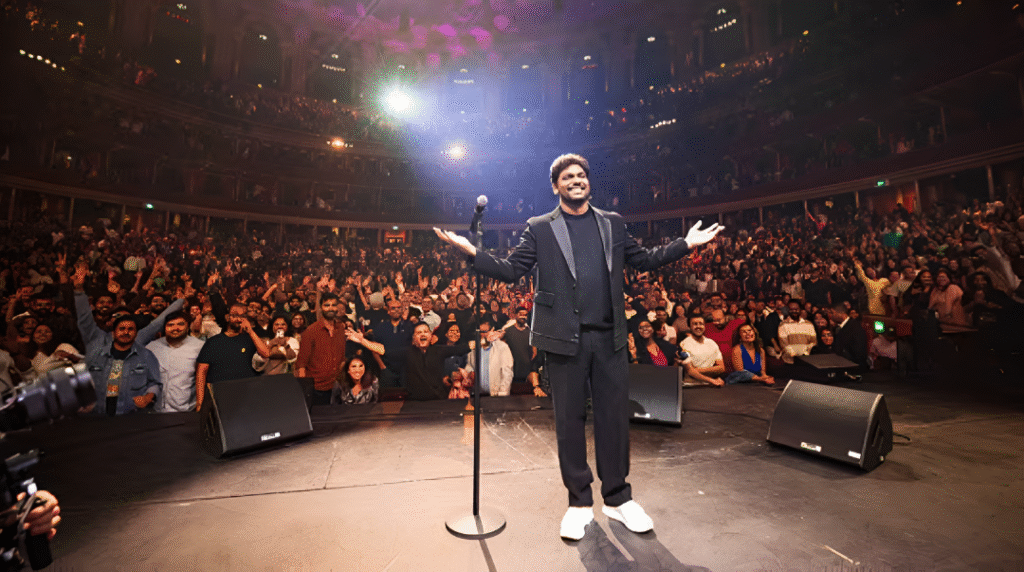
From Indore to the World Stage
Zakir Khan’s journey from a middle-class family in Indore to headlining Madison Square Garden is nothing short of inspirational. Best known for his specials like “Mannpasand”, “Kaksha Gyarvi”, and “Haq Se Single”, Zakir carved a niche for himself by staying true to his roots, performing in Hindi, and blending humor with poetry and philosophy. Unlike many comedians who switch to English for international audiences, Zakir’s decision to perform entirely in Hindi at MSG highlights his confidence in the global reach of Indian culture.
What This Means for Indian Comedy
Zakir’s achievement is being hailed as a watershed moment for Indian stand-up. While Vir Das was the first Indian comic to win an International Emmy for his work, Zakir’s MSG performance proves that regional and native-language comedy can thrive on global platforms. His success opens doors for other Indian comedians to dream bigger and perform authentically without diluting their cultural essence.
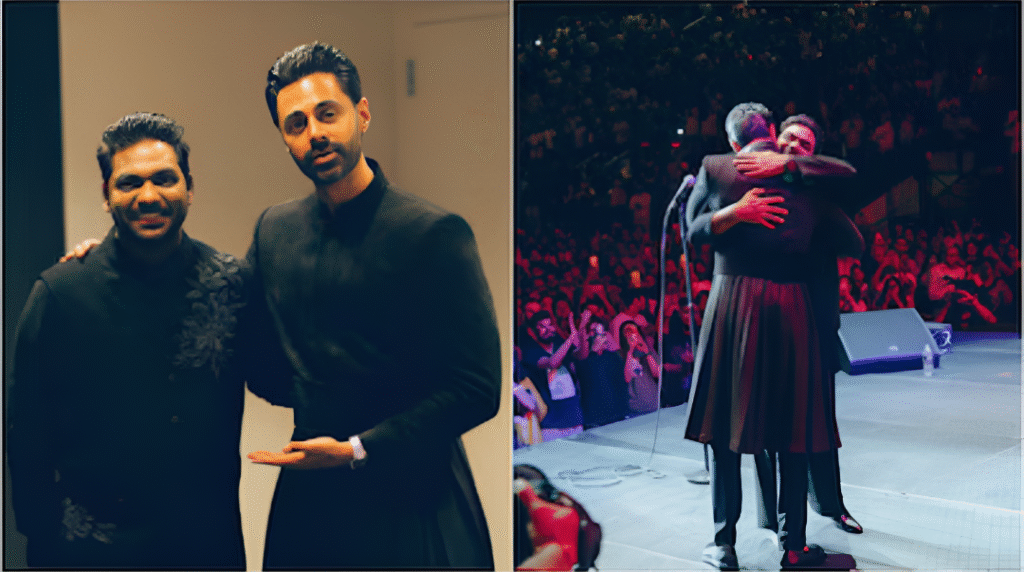
As one fan on X put it: “From YouTube videos to Madison Square Garden — Zakir Khan has shown us that Hindi jokes can echo across the world.
A Dream Realized for Hindi Comedy Fans
For millions of Indians living abroad, Zakir Khan’s MSG performance was more than just a comedy show—it was a moment of cultural pride and nostalgia. Many attendees shared on social media that hearing jokes in Hindi on such a grand international stage made them feel a deep connection to home. Some even described the experience as “watching India take over New York for one night.” This emotional connection explains why Zakir’s style of comedy continues to resonate with audiences of all ages, across borders.
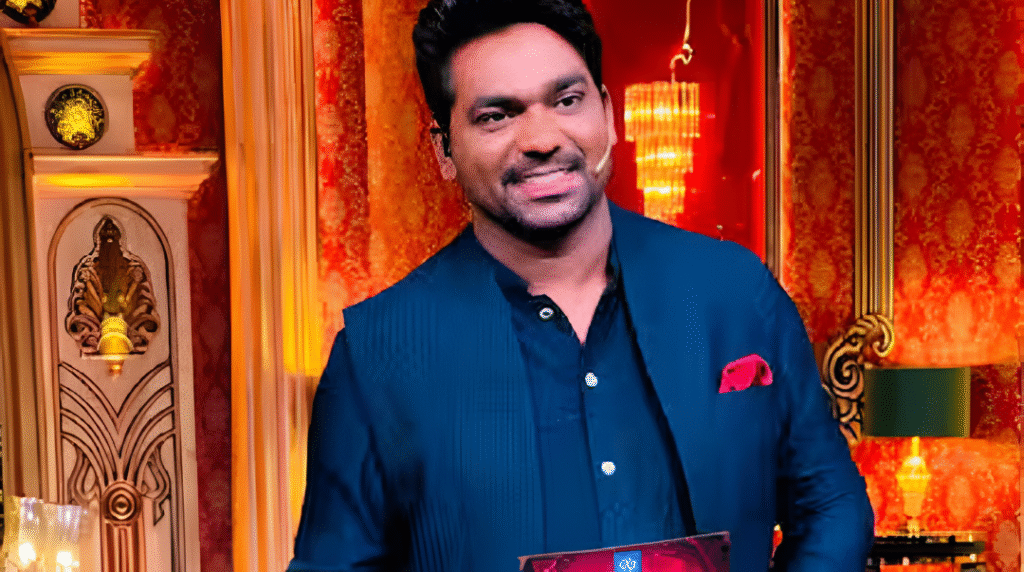
What’s Next for Zakir Khan
Following this milestone, Zakir Khan is expected to continue his North America tour with shows in Chicago, Toronto, and Los Angeles, before wrapping up with a special performance in London. Industry insiders suggest that Zakir might also turn this MSG show into a global streaming special, potentially making it available to millions who couldn’t attend. If that happens, the performance could further cement his position as one of the most influential comedians not just in India, but worldwide.
-

 Celebrity Lifestyle6 months ago
Celebrity Lifestyle6 months agoEx-Cricketer Shikhar Dhawan Buys Ultra-Luxury Apartment Worth ₹69 Crore in Gurugram
-

 Glamour & Entertainment5 months ago
Glamour & Entertainment5 months agoTelegram Channels Disseminating Pro‑Russian Propaganda in Poland
-

 Crime & Investigation3 months ago
Crime & Investigation3 months agoDelhi Police SI Neetu Bisht Caught Taking ₹20 Lakh Bribe – Shocking Details Emerge in Corruption Probe
-

 Business5 months ago
Business5 months agoAmazon sets 30‑day relocation deadline for corporate staff—opt out by resigning in 60 days
-

 Celebrity Lifestyle5 months ago
Celebrity Lifestyle5 months agoMaha Kumbh Girl Monalisa seen in car allegedly worth ₹1 crore
-

 Entertainment5 months ago
Entertainment5 months agoAbhijeet & Dr Tarika Reunite in CID 2 — Fans Say ‘Clear the Misunderstanding Now
-

 Education5 months ago
Education5 months agoNEET UG Controversy Explained: Paper Leak, Impersonations & Ongoing Probe
-

 Bollywood3 months ago
Bollywood3 months agoNo ₹3 Lakh Fine or 2-Year Jail: The Truth Behind the ‘Hakla’ GIF Buzz




